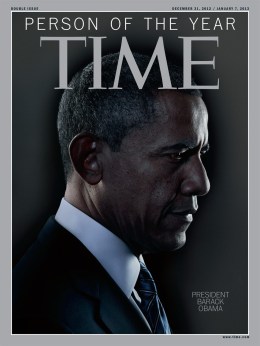
In 1782 an expatriate French aristocrat named J. Hector St. John de Crèvecoeur who lived in New York’s Hudson Valley published a book in London called Letters from an American Farmer. The third letter was titled “What Is an American?” That question reverberated in the late 18th century as the Old World tried to make sense of the New. It’s still relevant 230 years later, in part because Americans are changing even as America itself remains much the same.
Crèvecoeur wondered, “What then is the American, this new man?” He was a citizen by choice, not birth — he had decided to come here. Such a thing had never existed before. In many ways, Barack Obama is the 21st century version of this new American. But he’s more than just a political figure; he’s a cultural one. He is the first President to embrace gay marriage and to offer work permits to many young undocumented immigrants. There has been much talk of the coalition of the ascendant — young people, minorities, Hispanics, college-educated women — and in winning re-election, Obama showed that these fast-growing groups are not only the future but also the present. About 40% of millennials — the largest generational cohort in U.S. history, bigger even than the baby boomers — are nonwhite. If his win in 2008 was extraordinary, then 2012 is confirmation that demographic change is here to stay.
(MORE: Barack Obama, 2012 Person of the Year)
Obama is the first Democratic President since FDR to win more than 50% of the vote in consecutive elections and the first President since 1940 to win re-election with an unemployment rate north of 7.5%. He has stitched together a winning coalition and perhaps a governing one as well. His presidency spells the end of the Reagan realignment that had defined American politics for 30 years. We are in the midst of historic cultural and demographic changes, and Obama is both the symbol and in some ways the architect of this new America. “The truth is,” the President said in the Oval Office, “that we have steadily become a more diverse and tolerant country that embraces people’s differences and respects people who are not like us. That’s a profoundly good thing. That’s one of the strengths of America.”
All elections are about change, and 2012’s was as well. Pretty much everyone voted for change of some kind: 49% of voters wanted to change the President, while 51% of voters wanted the change that Obama promised four years earlier. The pollster Frank Luntz told me that 40% of America is ecstatic, 20% is accepting and 40% thinks the country is going to hell. “The only other time we’ve seen this was FDR in 1936,” he said. “Those who are alienated believe the President and his policies are not grounded in American values.”
(Inside the White House: Never-Before-Seen Photos)
But whose America is that? Is there a battle between the old America and the new? Obama would say no. He sees his time in office as a kind of convergence of past and future. “I think about this eight-year project,” he says, as one in which “we’ve also accommodated all the demographic changes and cultural and technological changes that are taking place and been able to marry those with some of the old-fashioned virtues of hard work and discipline and responsibility — all in a way that allows us to succeed and to thrive.” That’s the new America. And it’s finding its voice: the President we heard at the wrenching memorial service in Connecticut was more assertive, more personal, more willing to risk his political capital for what he truly believes.
At the end of Invisible Man, Ralph Ellison’s great 1952 novel about racial injustice, the central character says, “America is woven of many strands; I would recognize them and let it so remain … Our fate is to become one, and yet many — This is not prophecy, but description.” Just 12 years ago, Obama was so invisible that he attended the 2000 Democratic National Convention in L.A. and watched it on the Jumbotron in the Staples Center parking lot. Today he is universally visible — and known. But he would agree with Ellison’s observation that this change is indeed description and not prophecy. The new America is not so much the old e pluribus unum — out of many, one — but, as Ellison says, one and yet many. That is Obama’s America. For finding and forging a new majority, for turning weakness into opportunity and for seeking, amid great adversity, to create a more perfect union, Barack Obama is TIME’s 2012 Person of the Year.
Obama Photo Diary: 48 Hours with the President

